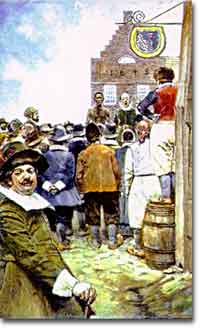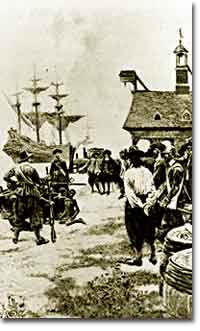6c. The Growth of Slavery

Africans were the immigrants to the British New World that had no choice in their destinations or destinies. The first African Americans that arrived in Jamestown in 1619 on a Dutch trading ship were not slaves, nor were they free. They served time as indentured servants until their obligations were complete. Although these lucky individuals lived out the remainder of their lives as free men, the passing decades would make this a rarity. Despite the complete lack of a slave tradition in mother England, slavery gradually replaced indentured servitude as the chief means for plantation labor in the Old South.
Virginia would become the first British colony to legally establish slavery in 1661. Maryland and the Carolinas were soon to follow. The only Southern colony to resist the onset of slavery was Georgia, created as an Enlightened experiment. Seventeen years after its formation, Georgia too succumbed to the pressures of its own citizens and repealed the ban on African slavery. Laws soon passed in these areas that condemned all children of African slaves to lifetimes in chains.

No northern or middle colony was without its slaves. From Puritan Massachusetts to Quaker Pennsylvania, Africans lived in bondage. Economics and geography did not promote the need for slave importation like the plantation South. Consequently, the slave population remained small compared to their southern neighbors. While laws throughout the region recognized the existence of slavery, it was far less systematized. Slaves were more frequently granted their freedom, and opposition to the institution was more common, especially in Pennsylvania.
As British colonists became convinced that Africans best served their demand for labor, importation increased. By the turn of the eighteenth century African slaves numbered in the tens of thousands in the British colonies. Before the first shots are fired at Lexington and Concord, they totaled in the hundreds of thousands. The cries for liberty by the colonial leaders that were to follow turned out to be merely white cries.






